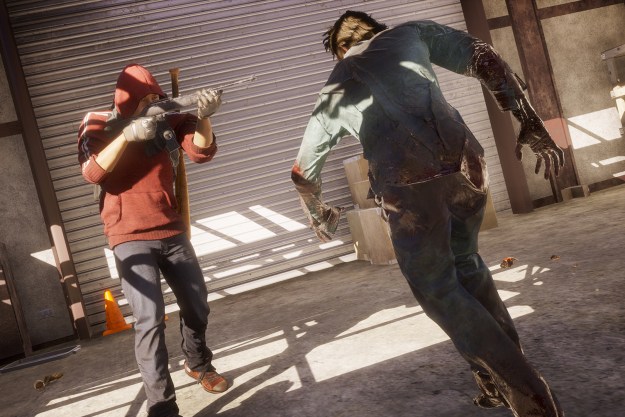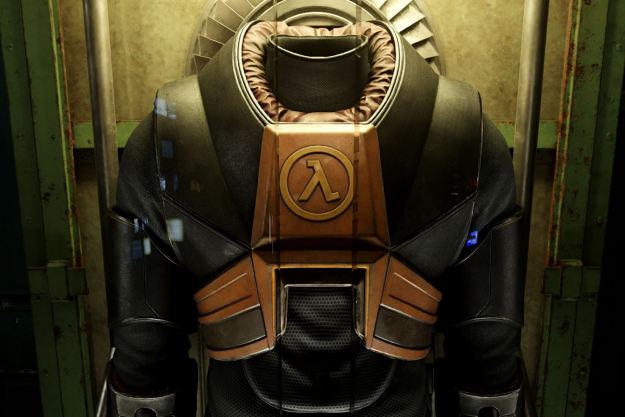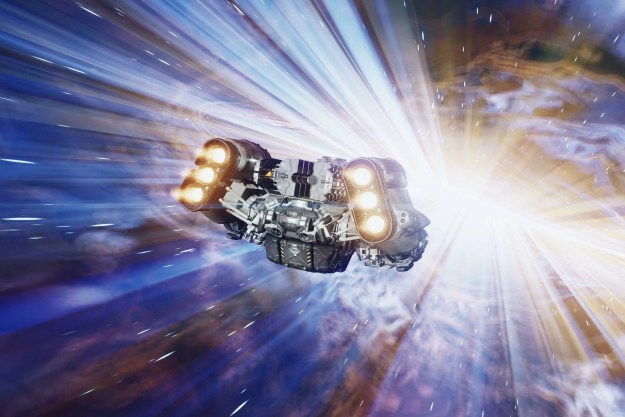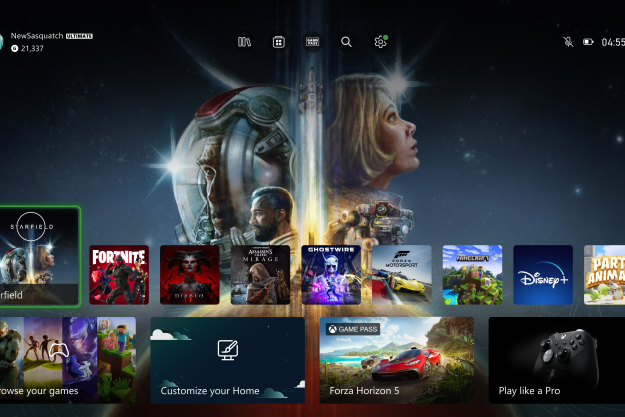
“State of Decay 2 is a unique take on zombie survival plagued by bugs and tedium.”
- Genuinely frightening at times
- Relative calm of success is a haunting message
- Lots of bugs
- Poor pacing, particularly near the end game
- Awful controls for exploration and traversal
State of Decay was something of a sneaker hit back in 2013. It was among the first of the open-world zombie survival games that, in time, would evolve into the massively popular “Battle Royale” pseudo-genre we know today.
With State of Decay 2, though, developer Undead Labs and its publishing partner, Microsoft, are looking to twist the formula. Mixing in cooperative play changes the chemistry quite a bit. The goal is to survive against the apocalypse – together.
That means a renewed emphasis on building a base that can supply and care for the people you gather. It’s a war you can win, eventually. One bite doesn’t doom you, and with enough resources you can even treat and cure those in your care. It’s a surprisingly optimistic take on the setting, but the spark of hope doesn’t last. A buffet of bugs and awkward design choices thwart the game’s best ideas.
Zombie survival takes a village
State of Decay 2 opens by letting you choose not one character, but a pair. Each has distinct skills, as well as a background that explains their traits. Some are better at cardio, others come with medical knowledge. Whomever you select, though, they’ll become your starting protagonist. Or, rather, protagonists. You don’t play as a person, but instead as all the survivors, leaping between them. You’re an invisible hand, guiding their actions, and hoping that you can pull them together to make it.
That comes with its own distinct tension. While you lose the power of a single narrative thread, you gain the story of the community. If one of your members dies, you feel that sacrifice — not just in the absence of their voice around your camp, but in the loss of their skills. The camp, your camp, pushes on regardless. There’s nothing else to do in the wastes. Death is a real and permanent threat, but not an insurmountable one.
The struggle for supplies binds the community-oriented gameplay together. There’s a constant need for more food and resources. After the opener, play settles into a gentle oscillation between outings and base management. It’s these parts that work the best. Gathering, while not terribly engaging on its own, forces you to make choices about the risks you’d like to take on, weighing those against what you desperately need.
Hungry mouths, festering wounds
And there’s always a need.
Food dwindles. Survivors get bitten and need medicine to be cured. Basic construction materials, too, find a use in patching and building up your safe house. And the progression from bombed-out dwelling to semi-permanent base that can hold its own is a powerful one, capturing the mundane audacity of living armageddon day-to-day.
From the moment you step foot into State of Decay 2 you’ll have to grapple with the game’s buggy, broken world.
In the early stages of a new expedition, for instance, you’ll need to find a high place to survey the area. While that might sound a bit like Assassin’s Creed or Far Cry, the distinction here is in the selection of targets. Scanning the area manually will help you pick out your destination. You may spy a cluster of houses to one side, or a supermarket to another. The former will have tight spaces and bottlenecks, great for avoiding a zombie swarm, but will also be light on supplies. Sorting out which might be a better target and when, is half the fun. There’s also a tradeoff between risk and reward.
Where this formula starts hitting snags, though, is in its execution. From the moment you step down from whatever tower you were using to get the lay of the land, you’ll have to grapple with State of Decay 2’s buggy, broken world. Simply traversing the area can be a pain. Jumps are criminally short, allowing you to scale tiny rocks, and occasionally a fence. lipping and falling down hills into inescapable nooks is common. So much so, that you’re given a special ability that allows you to get yourself unstuck. But that’s on two-minute cool down timer, and there are plenty of times you’ll need it more often than that.
Once the fighting starts, you’ll go through the standard zombie-killing bits. Shoot the walkers, stomp the crawlers, clear things out room by room. You’ve likely done this thousands of times in countless other games. Luckily, the combat in State of Decay 2 isn’t constant, so the lack of excitement rarely becomes annoying.
Decapitating zombies isn’t the point, anyway. You risk life and limb to scavenge new materials from abandoned lockboxes or refrigerators. When looting – and you’ll loot a lot — you have the option to move slowly so you don’t attract the attention of baddies nearby, or you can rifle through in an instant, but make more noise. It often seemed the quick-and-easy option caused new zombies to spawn in the game world, just so they could rush in and punish the expediency. While that makes sense in theory, in practice it can be woefully tedious.
Clawing out a living
Still, State of Decay 2 has moments of greatness. It’s not frightening because of jump scares, but how it reminds you of the fragility of life.
It is almost beautiful in its simplicity, in its repetition, but it’s impossible to look past its flaws.
When it launched, one of the most consistent praises for State of Decay was in its mundanity. The idea that the people you gathered together at your base could be trained up in cardio or marksmanship to make them more effective scavengers. That’s still true, and it’s easy to settle into the pattern of play the game was clearly designed around — survey, explore, gather, rebuild, repeat. That circuit is almost beautiful in its simplicity, in its repetition, as it can convey the lesson that success isn’t a point you cross, but a state you maintain.
Cooperative multiplayer should (and may one day still) be the game’s saving grace, as the camaraderie of real humans in this setting is a tough experience to top — but then we come back to the bugs. Disconnections, lost data, wiped saves, and other game-breaking issues are just that. And when two or more systems link up, the odds than one of you will get stuck multiplies.
That puts State of Decay 2 in the odd position of receiving a strong recommendation for those with an abundance of patience, but a pass for all others. At least until the basics are tightened and patched.
Our Take
Is there a better alternative?
Yes, and no. You can find many cooperative games with roughly similar themes, like Don’t Starve Together, or smash hits Fortnite and Playerunknown’s Battlegrounds. Even Valve’s classic Left 4 Dead 2 is in the same ballpark. However, State of Decay 2 scratches the itch for no-nonsense survival in a zombie apocalypse.
How long will it last?
Technically, the game could be played in perpetuity, particularly in multiplayer. We found the adventure wearing thin after a little over 20 hours.
Should you buy it?
No. State of Decay 2 holds promise, but its many bugs and thin gameplay fail to deliver on the game’s premise. You could sink hundreds of hours surviving in this game’s apocalyptic world, but a lack of variety in anything aside from bugs will leave you bored long before that.
Editors' Recommendations
- Senua’s Saga: Hellblade 2: release date, trailers, gameplay, and more
- Frostpunk 2 will come to PC Game Pass when it launches this year
- The best video game remakes of all time
- S.T.A.L.K.E.R 2: Heart of Chornobyl: release date predictions, trailers, gameplay
- Is Baldur’s Gate 3 coming to Xbox?







